And two other sites along the way.
The day after our souvenir-buying spree, we decided to take a taxi to the furthest-from-Cusco of one of four ruins. It was only 9-11 kilometres away (depending who you ask). Surely we could walk back (one day of feeling good, and I get grand ideas).
Now, taxis in Peru can be irritating as all get-out, but when you want one, man, it’s there. Our first encounter with honking taxis was in Nasca, which doesn’t get anywhere as many tourists as Cusco. We couldn’t figure out WHY the taxis in Nasca were honking all the freaking time! Once we were in Cusco, we realized that every time a taxi sees a potential fare, they honk. The potential fare could be a person trying to flag them down (except I don’t think you ever have to flag down a taxi in Cusco, as they have such an eagle-eye on their surroundings), or a person walking down the street that may or may not look like a tourist. We learned to drown out the sound of the honking taxis. When we needed a taxi to drive us to Tambomachay, the honking suddenly didn’t seem so bad!
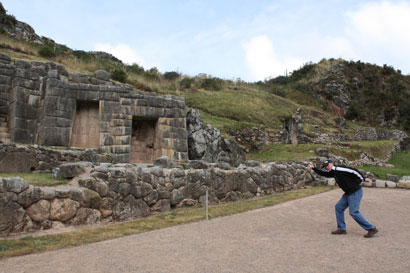
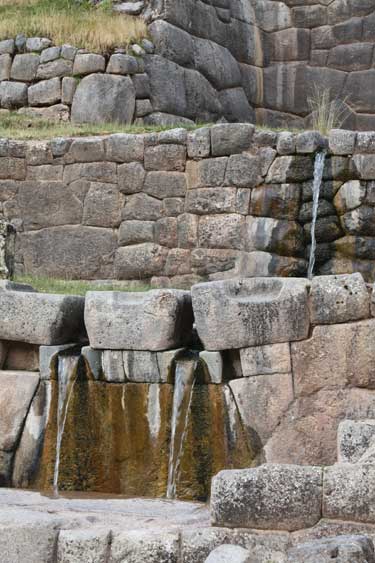


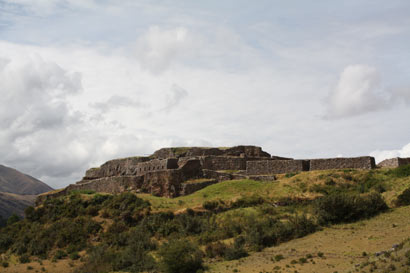
Puca Pucara (aka Pukapukara) is a small fortress that was probably used to store supplies or maybe as a guard post. No one really knows. It’s a nice spot to hang around awhile. However, then we had to walk (so our guidebook told us) 90 – 120 minutes to the next site closest to Cusco, Q’Enko. We tried to walk! We walked through a small village, but the altitude was wearing on us (and our wimpiness, I’m sure!). We made a pact that if a taxi drove by honking at us, we would stop him. And so we did! We hopped a taxi and caught a ride to what we thought was the entrance to the Q’Enko ruin. The sign said Q’Enko. But, basically, we were dropped off in the middle of nowhere. We walked and walked and walked. Asked some directions off some musicians that had just popped out of their own taxi. They thought we were looking for something else entirely, or possibly they were just having fun at our expense. Finally, we realized we were on a dirt road amidst fields with nothing vaguely resembling an Incan site, except, lo and behold, there was a guy lounging against the fence beside a dozen horses. With our limited Spanish, we managed to get out of him that we had basically walked in the wrong direction. So we returned the way we’d come (after tipping the horse guy for his directions), waved to the guy who’d given us the wrong directions, then eventually found the back way into the Q’Enko ruins.
The Q’Enko ruins are a bunch of huge rocks that might have been used for ritual ceremonies and/or sacrifices. The big huge rocks create an interior “cave.” You can climb around inside the caves and imagine where blood might have flowed if your throat was cut in sacrifice.
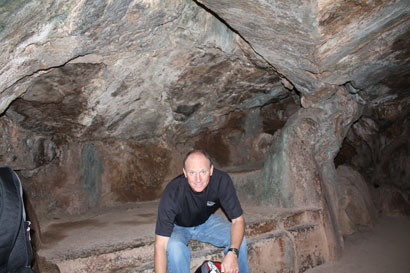
After Q’Enko, we walked to Sacsayhuamán, a positively HUGE set of ruins that is still being excavated near Cusco. It was quite amazing. Sacsayhuamán is pronounced sort of like “saxywoman,” so a few times you’ll hear the joke “sexy woman.”



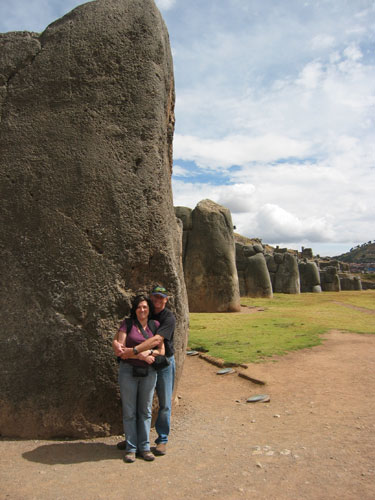
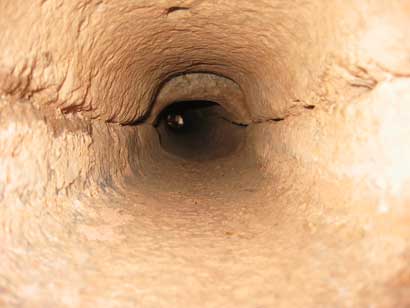
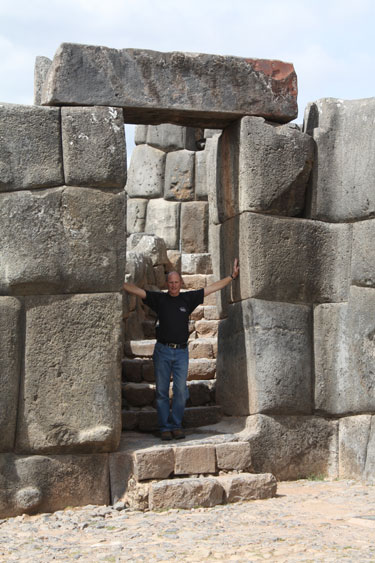
You can catch great views of Cusco from the hills around these ruins. There’s also a giant white statue of Christ a fair hike away. I just could not handle another uphill hike at 11,000 – 12,000 feet above sea level, so we hired a pretty beat-up looking taxi with a young driver to take us to the Christo Blanco, then wait there while we had a look, then drive us back to Cusco.
If you’re old enough to have ever watched an epsiode of The Streets of San Francisco, that’s what our drive back to Cusco felt like, a car chase through those streets! Especially once we reached the city. Because we’d asked him to drive us to the Plaza de Armas. To do that, he had to drive down narrow, steep streets, dodging tourists and vendors. But we survived. This was the last night we spent in Cusco. A well-deserved “rest,” if you can call it that, after all our hiking at Machu Picchu.
We were finished the 3rd leg of our 4-leg trip. Next stop, Lake Titicaca near Puno!
Oh, I am so jealous. This is somewhere I’ve always wanted to go.
You definitely should try. It’s all very cool.